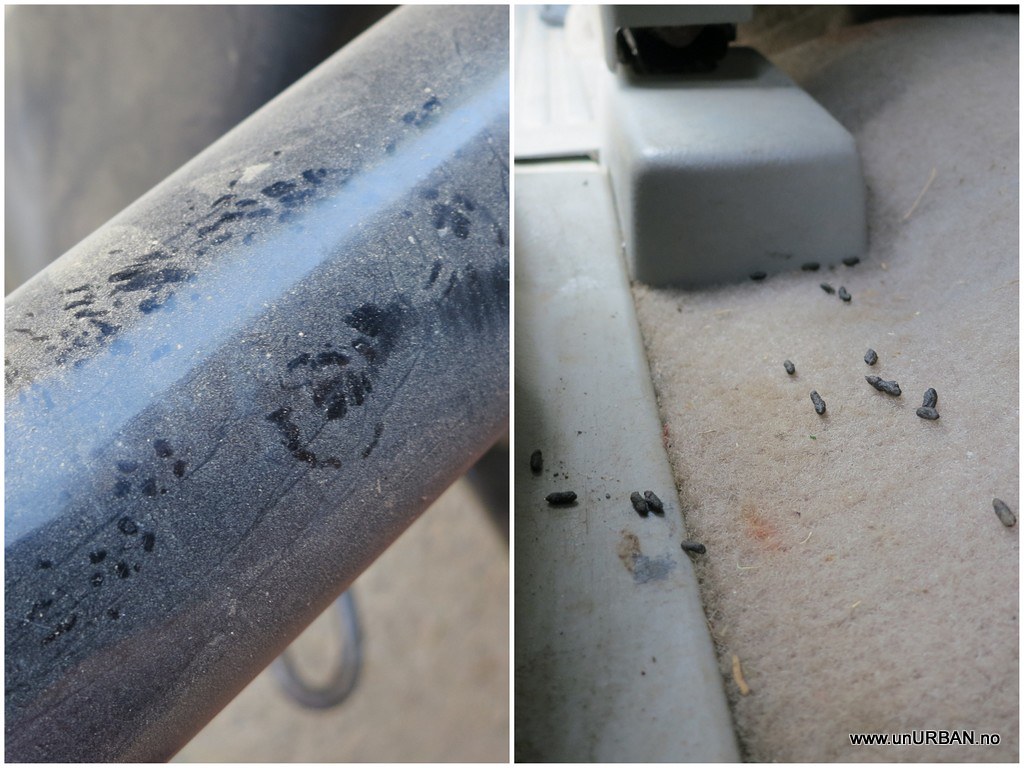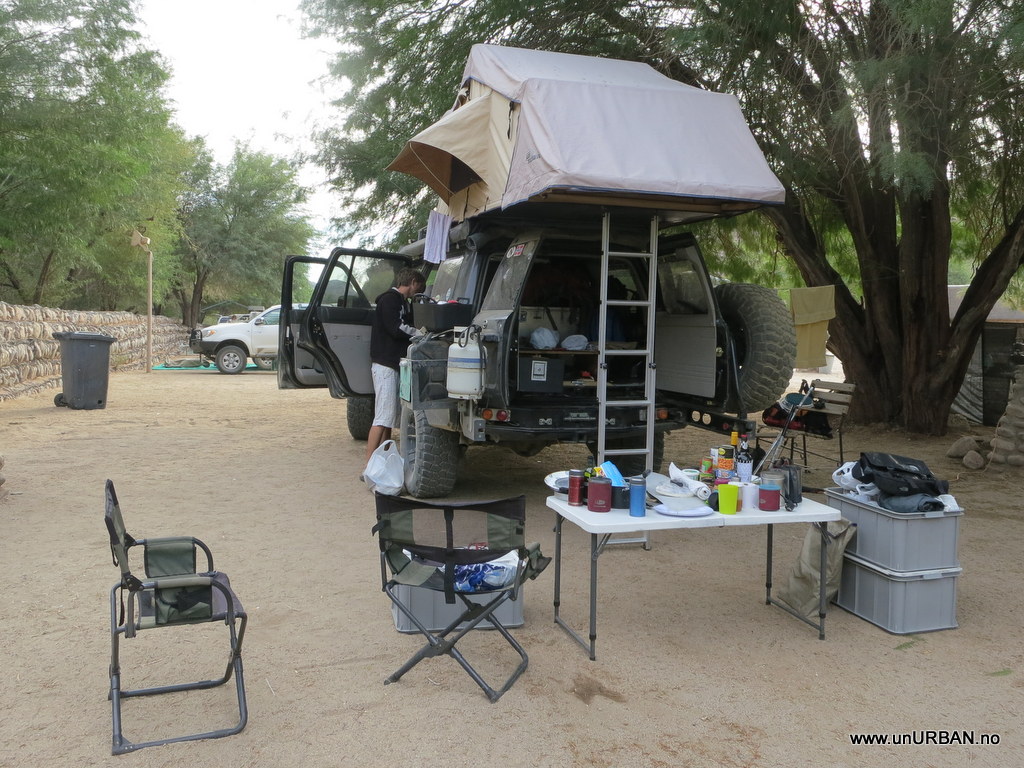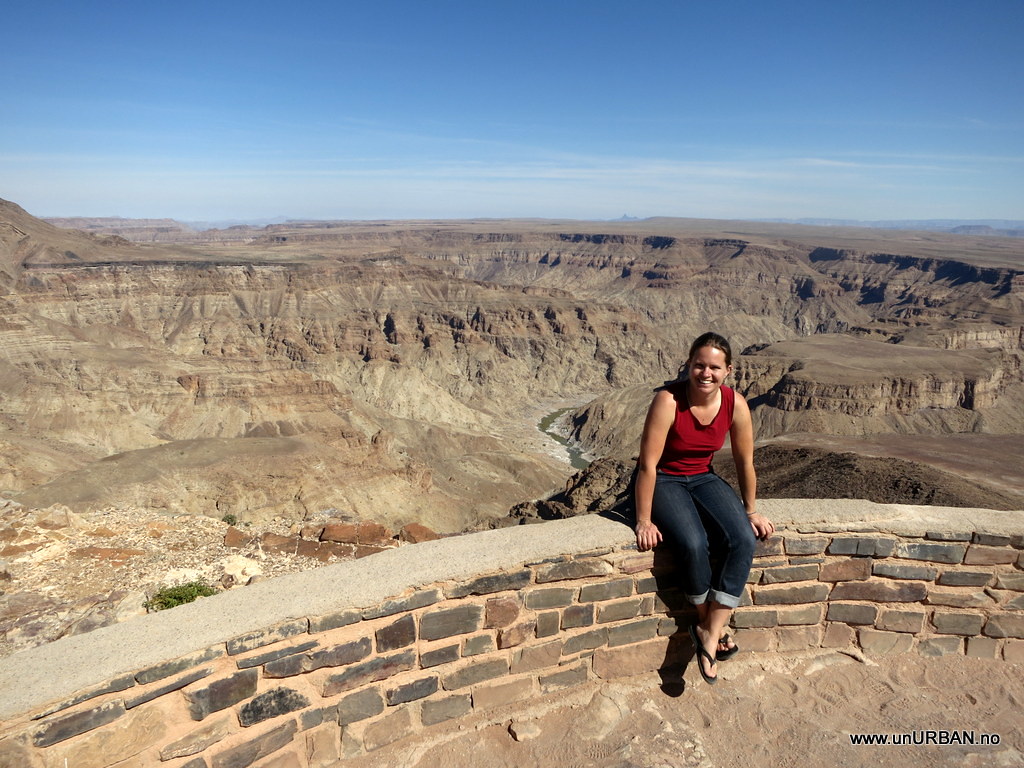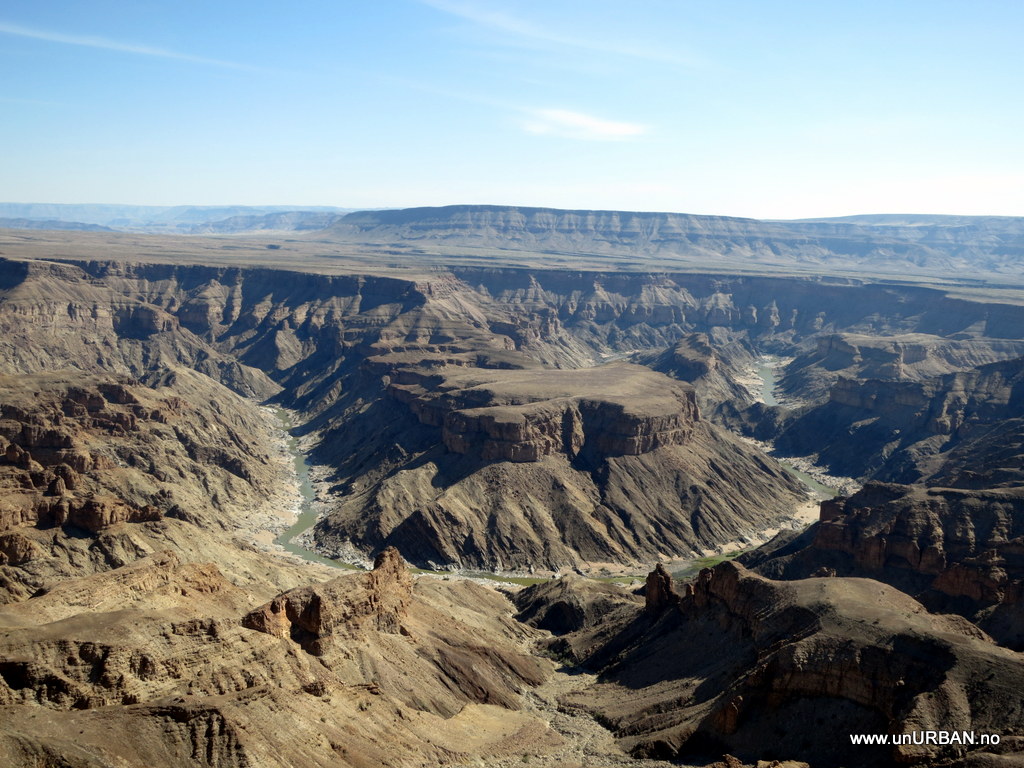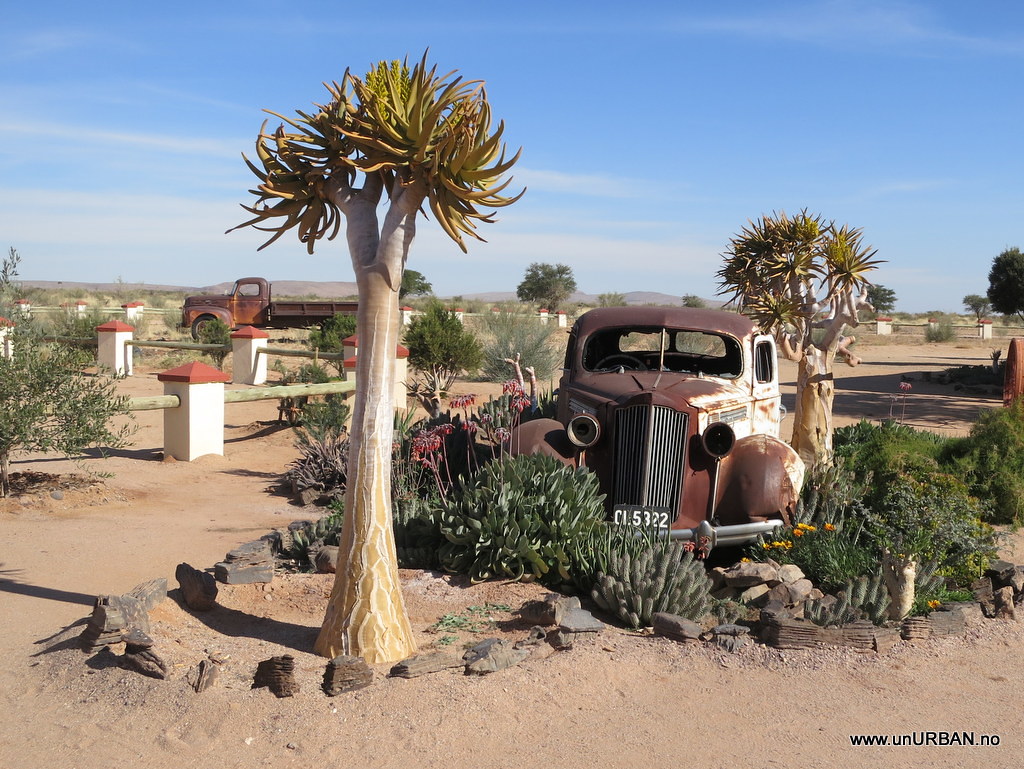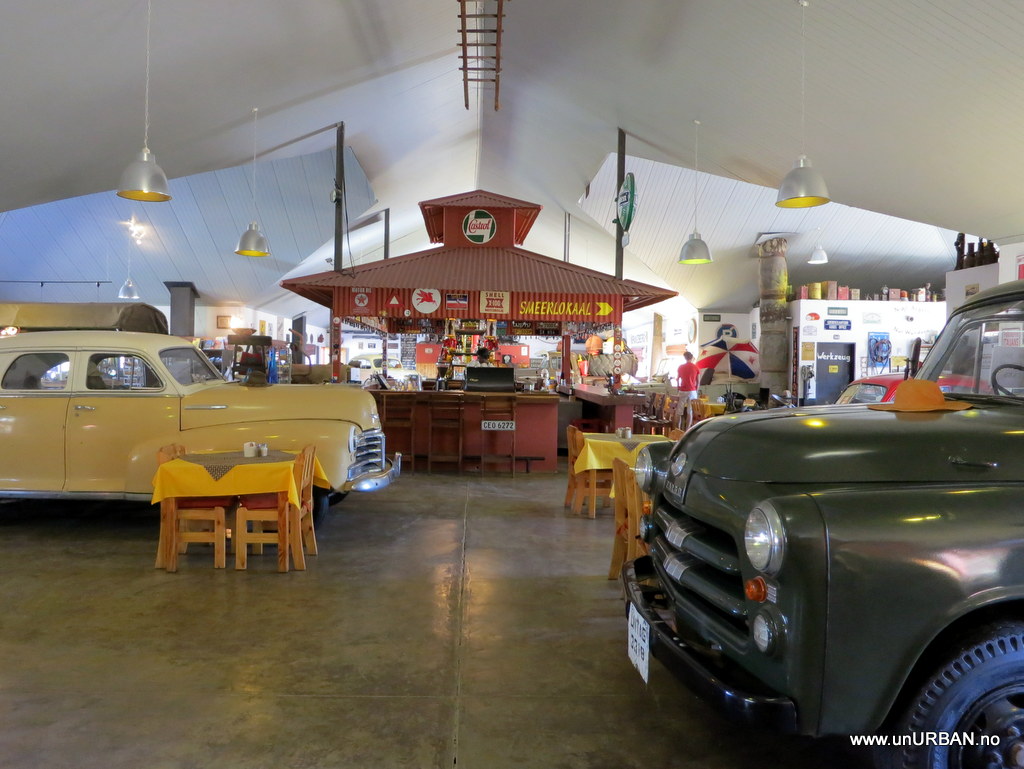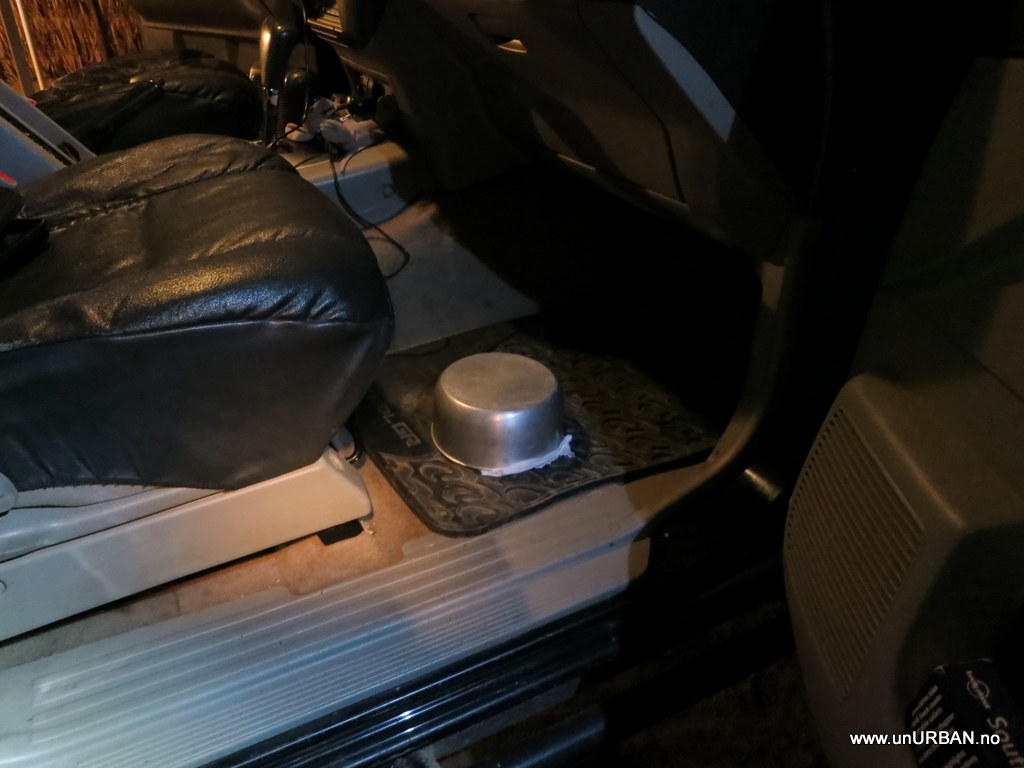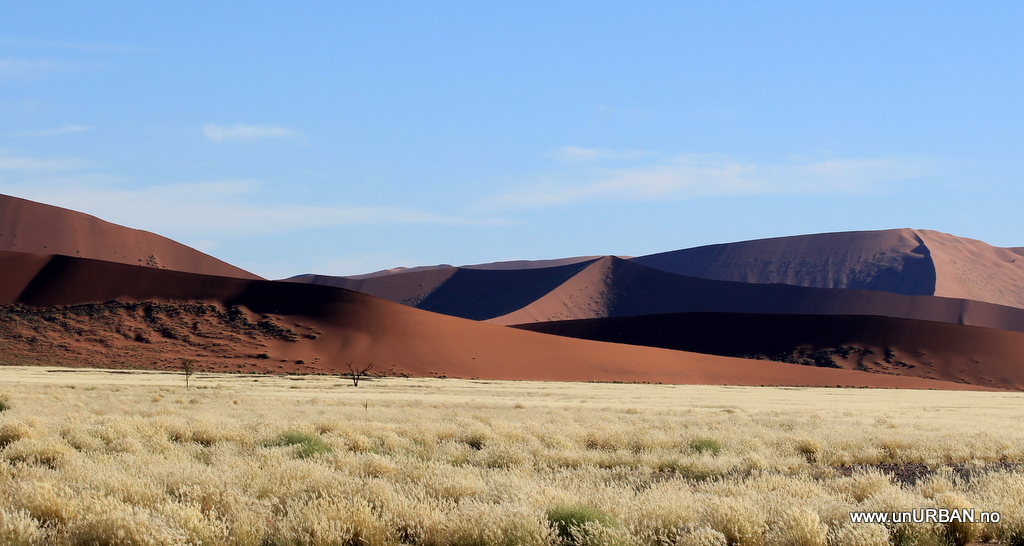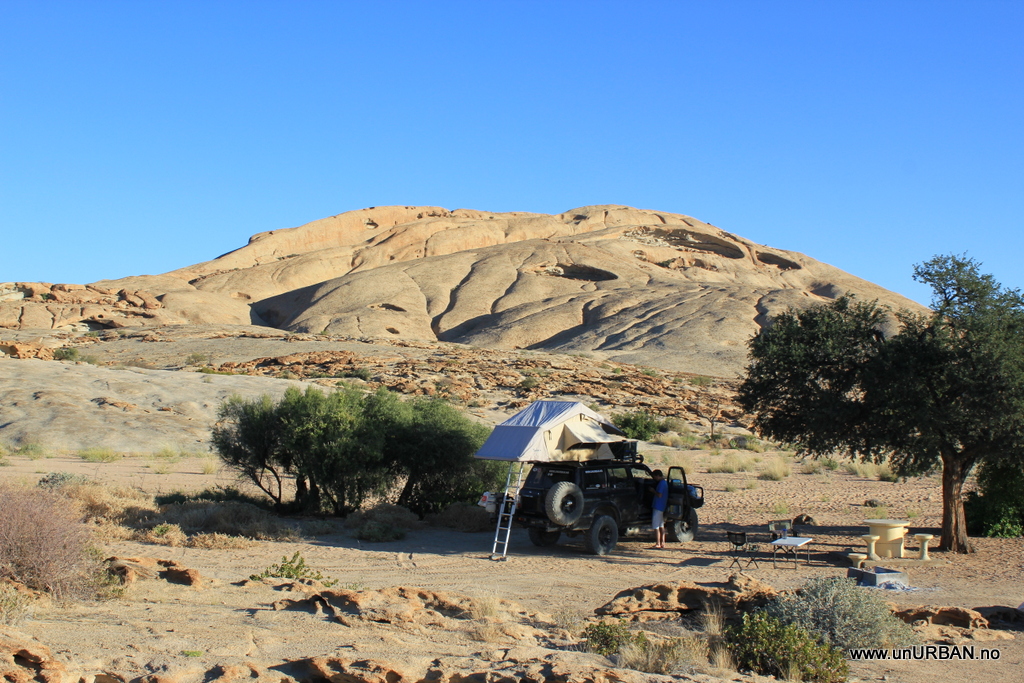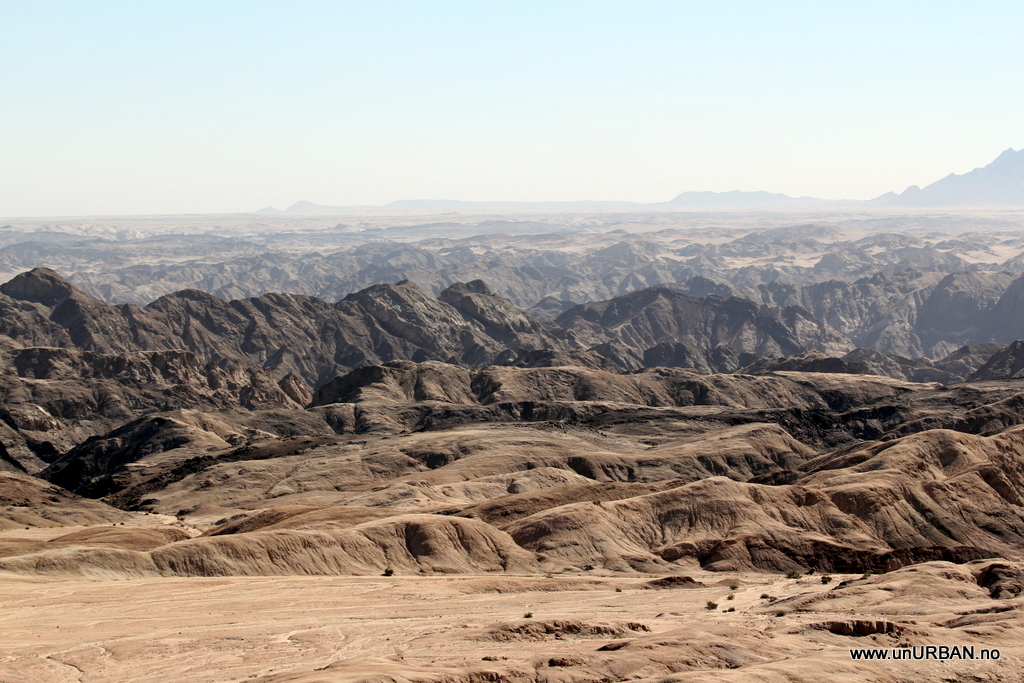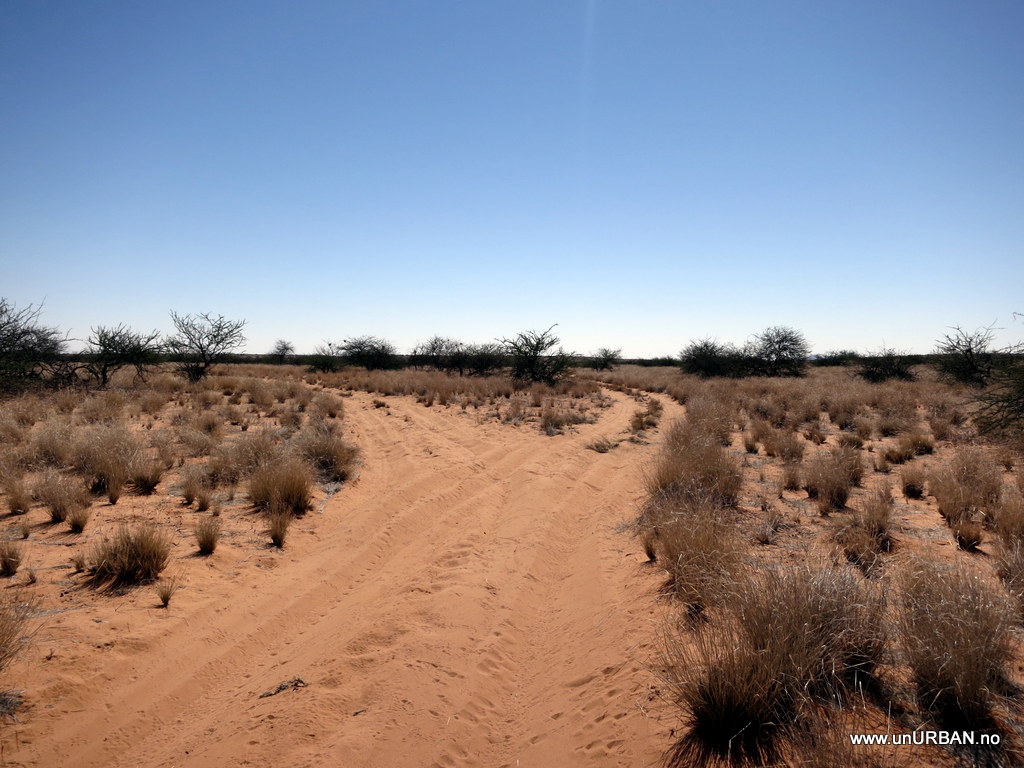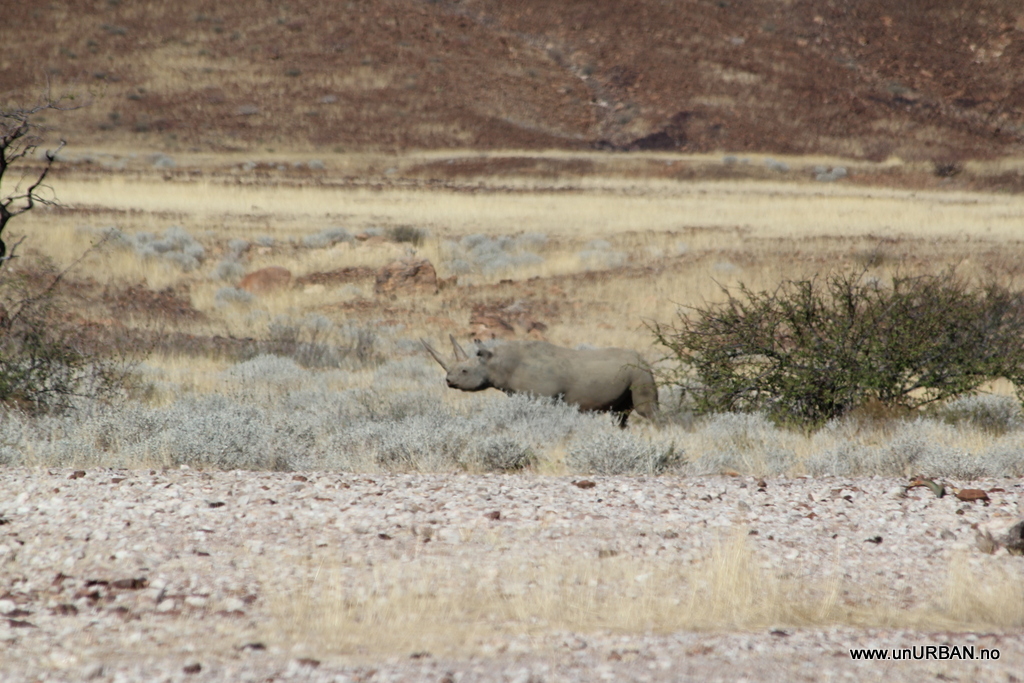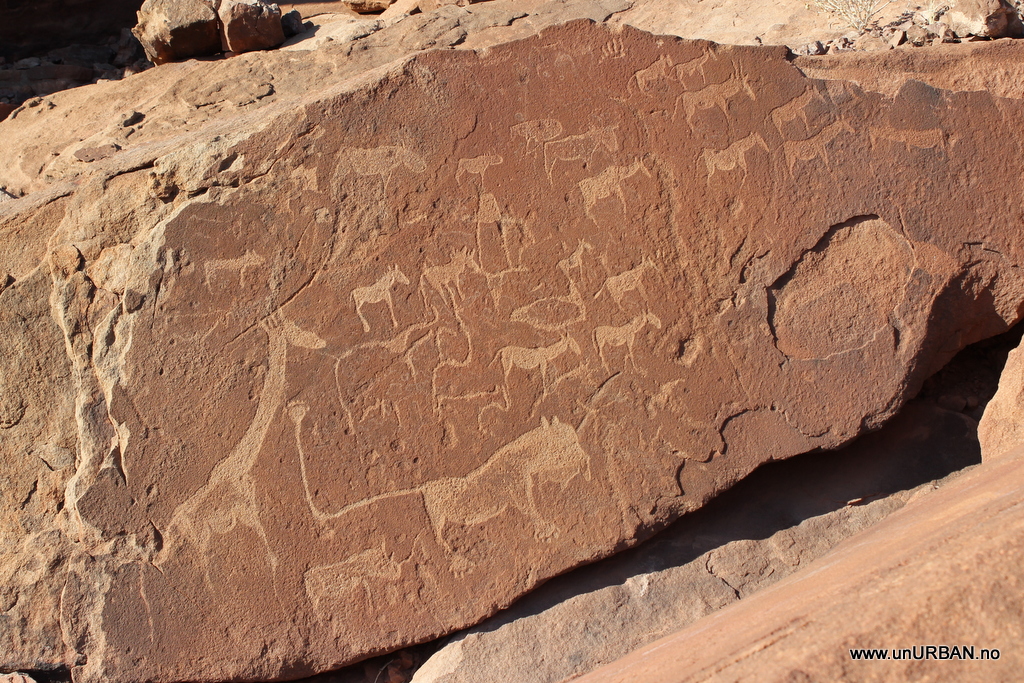Namibia
At the moment we are in Kamanjab. Since crossing the border from South Africa we have driven 1850 km on Namibian roads and of those about 100 km is on paved roads. Our guidebook says “Namibia has one Africa’s lowest population densities” and it has been a lot of open space. The largest city we have driven through was Swakopmund with 42,000 inhabitants. Most of the distance has been in the Namib Desert, the oldest desert in the world.
It has been an incredible landscape to drive through and one of the highlights was Sossusvlei with the red sand dunes. Some of the dunes are as high as 325 meters. Sossusvlei is Namibia’s tourist destination number one and most people would like to be there for the sunrise so the dunes are even redder. At sunrise we were 300 km away, but we arrived there in good time before the park closed so we got the sunset instead. There were a few other vehicles in the park, but it was a great time to visit as we had it almost to our self.

From Sossusvlei you can travel on the main roads in the Namib-Naukluft Park, but to be able to drive on all the small roads you see on your map you have to buy a permit. Permits are sold at Namib Wildlife Resort (NWR) in Sesriem or one of their other offices depending on where you are. A day permit costs 40 Namibian Dollar (ND) per person and 10 for the car, total of 12 USD. We booked to stay at a basic campsite at Bloetkoppe, that is in the Namib-Naukluft Park, for one night, and then our vehicle permit was automatically valid for two days. Perfect
Our campsite at Bloetkoppe.
A “moon landscape” we drove through on our way to Swakopmund.
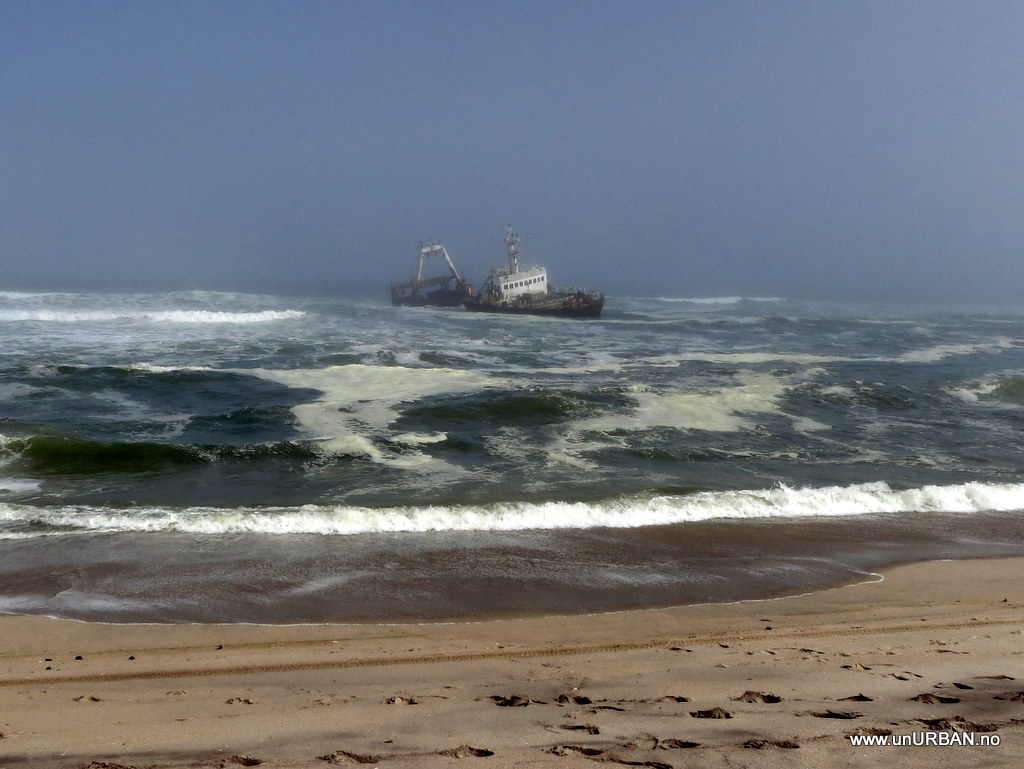
From Swakopmund we wanted to drive north on the Skeleton Coast. The “Skeleton Coast” is divided into three sections. The first 200 km north of Swakopmund is called the National West Coast Recreational Area and there you can enter for free. Middle section is The Skeleton Coast Park that stretches from Ugabmund to Möwe Bay. To enter the park you need a permit from NWR and you need to have a reservation to stay at the campsites. If you have not booked a campsite you can get a permit to drive from Ugabmund to Springbokwater, roughly half of the Park in a day. A permit for the two of us and the vehicle for a day would cost 170 ND, about 22 USD. The northern third of the Skeleton Coast is called the Skeleton Coast Wilderness and the entire area is a private concession, and to enter that part of the Skeleton Coast is not for our budget. We were considering buying the day permit for the middle section, but it would have ended up being a bit of a detour for us.
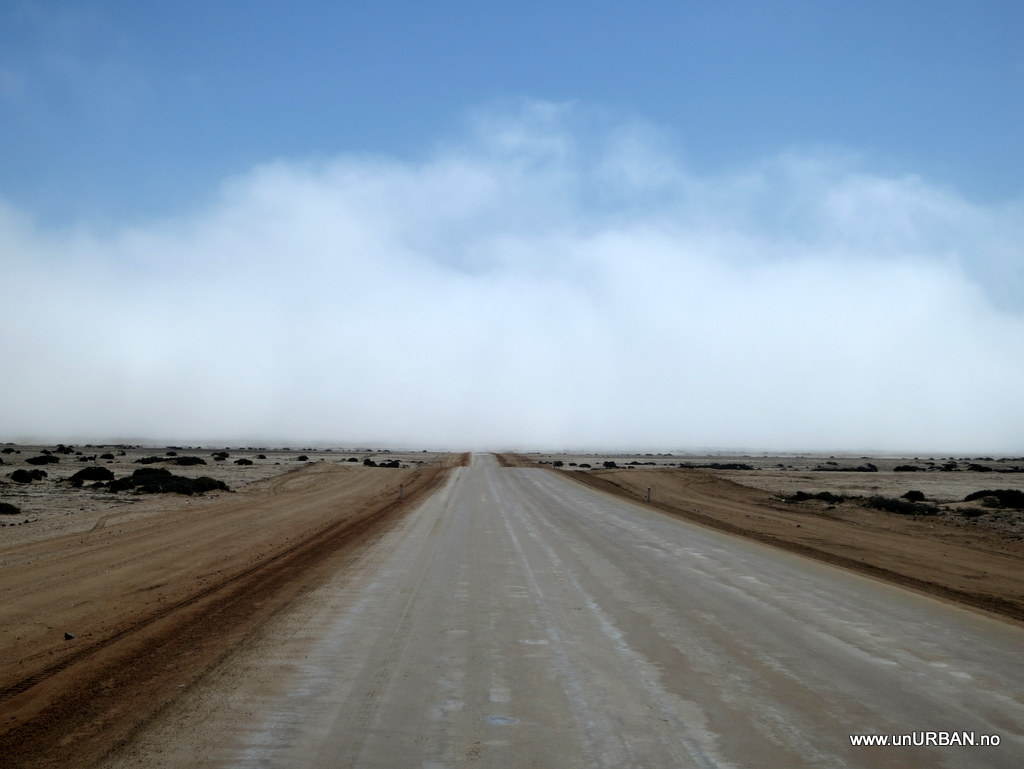
As we were driving north along the first section and the fog rolled in we said it was enough of the coast and turned inland.
After a night in Uis we asked the GPS for the shortest way to Twyfelfontain. It was probably the shortest way, but definitely not the fastest. As we were driving along this road we realized we had not really checked what kind of road it was. When we later checked, it said deep soft sand and serious 4WD needed.
It was not that bad, but at one stage I gave up the driver’s seat to Espen as he is better to drive in soft sand than me. The drive was the best we have done so far in Namibia. Great landscape and just us on the road.
In one area we saw a lot of elephant dung, but not the desert elephant itself. At a water hole we came across our first giraffes and a few kilometers further our first rhino. And it was all for free, not in a National Park where you have to pay entrance fees.
Some hours later than expected we arrived at Twyfelfontain and had a look at some of the 2500 rock engravings that has been discovered in the area. The engravings and paintings were probably done by San hunters for as long as 6000 years ago. Fascinating to see 6000 years old engravings of the animals that we had seen along the road the same day.
In Kamanjab we are only halfway through our trip in Namibia so there are probably more nice drives ahead of us.
Malin


